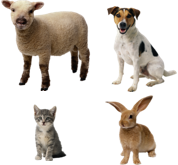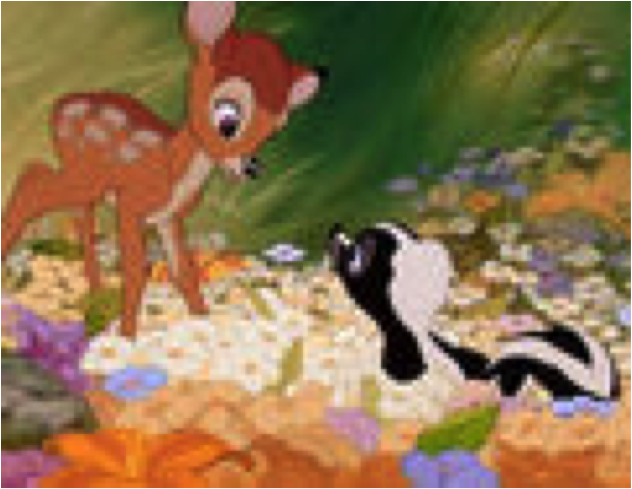|

|
English Structures
First Language Acquisition
|
The Stages of First Language Acquisition
| Stage 4: The Two Word Stage |
The Two Word stage normally begins at around 18-24 months (1½
or 2 years) and continues for several months, perhaps shifting into the next stage at about 2½ years old.
During this stage children continue to increase the repertoire of sounds and vocabulary they can produce according to the order of development that was begun in earlier stages. Some notable benchmarks and features in the production of language in this stage include:
- 11 consonant sounds are typically included, the specific sounds depending on the native language being acquired.
- A vocabulary of 50 or more words marks the beginning of this stage, with more words being added.
- Clear syntactic and semantic relations begin to appear, but not syntactic or morphological markers.
- There are no inflectional affixes and pronouns are rare.
|
|
Since the linguistic nature of the child's utterances is now unmistakeable, it is interesting to note how meaning is attached to the utterances, for although they are clearly linguistic in nature with meaning attached, they are still unlike the utterances of adult native speakers. The utterances are different because they lack full syntactic markings and because the limited vocabulary size is insufficient to capture an adult perspective of the world. What is uncertain, however, is whether the child's perspective is constrained by the lack of vocabulary or whether the size of the vocabulary is constrained by the childish perspective. (Note the interrelationship of language and thought in this conundrum; you should be able to see both the Sapir-Whorf Hypothesis and Vygotsky's theory here.)
The pictures and captions below capture some of the details and provide examples of the thought/language conundrums present during this stage.
|
An utterance can carry more than one meaning because of the absence of syntactic and morphological markings. The word order of the two words matches the word order an adult might use, but for the child, the same two words in the same order could have more than one meaning. The full meaning must be derived from the context in which the words are uttered.
Example: Mommy sock can mean Mommy is putting my sock
on my foot, or There is mommy’s sock. |
|
|
Words are associated with meaning in several ways, and each way displays a limited vocabulary/perspective:
a) Whole Object: A word refers to the whole object, not to any of its parts or to any of its attributes. Does this mean that a child doesn't break down objects into individual parts at this stage of cognitive development? Very possibly.
Example: sheep will not mean white or woolly or leg. |
|
|
| b) Type: A word may be used to refer to the type of thing, not a particular thing. This could be a kind of overgeneralization or overextension. That is, the child might misunderstand the meaning of the word sheep and think it refers to all animals. It could also be that the child doesn't perceive the individual variations betwen two types of animals and conceptually lumps them all together. Or it could be that a child simply doesn't know the words for all the different kinds of animals and makes do with the name of another one.
Example: A child may take sheep to mean any animal, not just that particular kind of animal. |
|
|
Overextensions may not be a misunderstanding of a word on a child's part, but may be a compensatory
technique to overcome vocabulary limitations. The process of overextending a word's meaning plugs a hole until the child can learn the proper word.
Example: If it's alive, and non-human, it's a sheep! |
Sheep! |
Sheep! |
Sheep! |
Sheep! |
Sheep! |
|
|
|
|
|
|
|
|
| Underextension may also occur. In underextension, a child doesn't use a word for enough particular cases. It's the opposite of overextension where a child uses a word for too many different cases.
Example of underextension:
Kitty might mean the family cat, but not other cats.
Underextensions may occur because a general word (like kitty) is almost taken as a name, not as a word. It could also be related to the prototype concept of word meaning. The prototype theory suggests that people have mental concepts of a word's meaning and attach a word to the concept. The concept is developed through interaction with the world. If the family pet is what a child interacts with, but it is unusual, then a child might not see the word for the family cat as appropriate to another cat that lacks the unusual features of the source of the concept. |
 Example: If this is what kitty means in your house, what would you use to call the animal in the picture on the right?
Example: If this is what kitty means in your house, what would you use to call the animal in the picture on the right?
Image from: http://arnoldzwicky.wordpress.com/2009/01/23/dialect-dangerous-to-cats/ |
|
|
| c) Basic level assumption: a word refers to types
of objects that are alike in basic ways. Adults will recognize a child's meaning even when an incorrect word is used (from the adult's perspective) because the word used by the child will share the same basic features as the word an adult would use. If a child doesn't know the word for an animal, he/she will likely choose the word for soemthing else that is alive and moves around.
Example: sheep might be taken to mean any animal, but probably won’t be taken to mean
rose or flower. |
 |
|
|
| Thus, Disney's Bambi is a bad example
of first language acquisition! |
 Copyright © : Walt Disney
Copyright © : Walt Disney |
|
|
| Contextual clues are extrememly important for attaching meaning in this stage. An adult may need to follow a child's gaze or their pointing in order to determine the exact meaning of an utterance. Or an adult might need to observe what the child is doing in order to determine the meaning of the utterance. Likewise, a child in this stage needs to use the context to make sense of what an adult is saying. |
|
| Continue to Part 5: Telegraphic |
|
American Sign Language The sign language used by the deaf community in the United States.
Test of English for International Communication. A standardized exam for Educational Testing Services that is intended to determine the general capability of an NNSE to use English to conduct business. It is used by some businesses, predominantly in Asia, in hiring.
Test of English as a Foreign Language. A standardized exam from Educational Testing Services that is intended to determine the general capability of an NNSE to use English as the language of insruction .It is used as an admissions requirement by most US universities and colleges for international students.
Teaching English to Speakers of Other Languages. A term that encompasses both TEFL and TESL. It is the name of the professional organization to which many teachers belong. TESOL the organization has many regional affiliates both in the US and abroad.
Teaching English as Second Language. Refers to the activity of teaching the English language as a tool necessary for some daily task like instruction, shopping, or interpersonal interactions.
Teaching English as a Foreign Language. Refers to the activity of teaching the English language as an intellectual, academic pursuit to non-native speakers of English.
Native Speaker of English. Refers to a person who acquired English in infancy and young childhood as a first language.
Native Speaker. Refers to a person whose relationship to a language is that it was encountered in infancy and young childhood as the dominant language of the environment.
Non-Native Speaker of English. Refers to a person who didn't acquire English as a first language, but came to it after another language was established.
Non-Native Speaker. Refers to a person whose relationship to a particular language is that he/she didn't encounter it while initially acquiring language, but came to it after another language was established.
Limited English Proficient. An adjectival phrase used to refer to the same students as ELL refers to. LEP is falling into disuse as it focuses attention on student deficiency rather than on the positive attribute of learning. Is being replaced by ELL.
Second Language. Refers to any language gained subsequent to the first or native language. It is acquired or learned secondarily to the native language. Doesn't refer to the ordinal numbering of languages, only to the relationship of a particular language to a persons native language.
First Language. Refers to the language that an individual encounters as an infant and young child; a persons native language.
English for Specific Purposes. Refers to the goal of learning English to use it for highly focused activity, such as for business or for aviation communication.
English as a Second Language Program. refers to a school program that is purposefully structured to provide instruction on the English language to NNSEs. An ESL program does not typically include instruction in any other subjects than English. An ESL program may be a component of a larger ELL program at a school.
English as a Second Language. Refers to the subject matter of the English language and the methodology for teaching the English language to non-native speakers. ESL makes no reference to the subjects other than English, but it is not methodology alone either, it refers to teaching the English language as content area. Typically, ESL refers to the study of English in a country where it is used for at least one daily task, such as instruction, interpersonal relations, or shopping.
English Langauge Learner Program. Refers to a school program that is purposly structured to provide instruction on the English language and instruction in other content areas to English Language Learners.
English Language Learner. Refers to students who are in the process of learning English, whether they are in ESL classes exclusively or a combination of ESL classes and other subject area classes.
English as a Foreign Langauge. Refers to the study of English as an intellectual, academic pursuit, not a a language whose use is necessary or desirable for daily life, although it may be used as a research tool. Typically, EFL is the study of English in a country where English is not a language of instruction or daily interactions, such as in Italy or in Saudi Arabia.
English for Academic Purposes. Refers to the goal of learning English to use it as the language of instruction for other subject areas.
Refers to a school program that is purposely structured so that students will use two languages on a daily basis.
Refers to the use of two languages in any capacity on a daily basis. A bilingual person uses two languages on a daily basis--for work and at home, perhaps, or for different subjects at school. Can also refer to the ability to use two languages, even if not used daily.